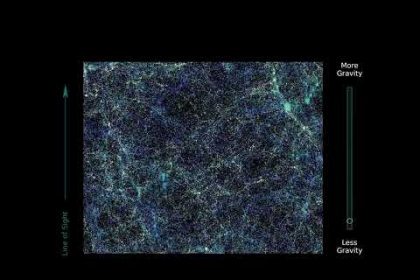In a new study, astronomers have made a surprising discovery about the large-scale structure of the universe. Using accurate and advanced data, they have managed to identify huge regions that pull galaxies and galaxy clusters towards them due to the force of gravity. These regions, which are called “gravity basins”, play a very important role in the formation and evolution of the universe.
According to Tekna Technology Media Astronomy News Service, among these gravity basins, “Sloan’s Great Wall” has been introduced as the largest known structure so far. This massive cosmic wall, which is much larger than the Shapley supercluster, shows that our understanding of the structure of the universe is still evolving.
This research provides a new perspective on how cosmic structures form and evolve. By identifying gravitational basins, we can better understand how galaxies and galaxy clusters have evolved over billions of years into their present form. The discovery also helps us answer fundamental questions about the nature of dark matter and dark energy, which make up most of the universe.
Researchers have prepared maps of the distribution of galaxies in the universe using accurate and advanced data obtained from various observations. Then, using computer simulation models, they have identified different areas that have strong gravitational force. These regions are known as gravity basins and attract nearby galaxies and galaxy clusters.
This research shows that the universe has a very complex and dynamic structure. Gravitational basins, as fundamental structures of the universe, play an important role in the formation and evolution of galaxies and galaxy clusters. With continued research in this field, we can expect to gain a deeper understanding of the history and future of the universe. To see the latest news, refer to the scientific news page of Tekna Media.
RCO NEWS

















